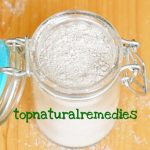Snake Bites – Things to Know
According to statistics, each year, 2.5 million people are bitten by venomous snakes and about 125,000 of them die. These cases usually occur in Brazil, India, Southeast Asia and Africa, where most of the poisonous snakes live.

Any venomous snake bite can be fatal if an anti-venom substance is not given immediately. Those at higher risk are children because venom travels faster through their smaller bodies. If measures are taken immediately after the bite occurred, complications can be avoided and the life of the victim saved.
Contents
Causes of venomous snake bites
Snakes tend to avoid people. However, their last resort is to bite when surprised or threatened. Snakes responsible for venomous bites include rattlesnakes, cobras, coral snakes, copperheads, and cottonmouths. Various species of snakes found in local zoos also tend to be venomous.
There are many snakes in and near bodies of water that are wrongly taken as being venomous. In fact, there are plenty of snakes out there that are harmless and incapable of inflicting poisonous bites. However, especially if you don’t know what type of snake bit you, or if it immediately disappeared from your view, then the bite has to be taken as venomous.
Symptoms of snake bites
There are different symptoms of snake bites, depending on each species. Some of the common symptoms are bleeding from the wound, severe pain, burning sensation in the affected area, profuse sweating, nausea, increased thirst, vomiting, fainting, rapid pulse rate and paleness.
The bites of cottonmouths, copperheads and rattlesnakes are extremely painful and can also cause breathing difficulty, blurring of vision, increased thirst, a decrease in blood pressure, tissue damage, changes in skin color and weakened pulse. The bite of a coral snake is more dangerous as it can cause inflammation of the tongue and throat, slurred speech, excessive salivation, difficulty in swallowing, abdominal pain and headache. The bite of a coral snake can be lethal, especially if it is not untreated right away.
Snake bite first aid and treatment
What you have to do when someone has been bitten by a snake is to go to a hospital or get medical assistance so that they can inject the anti-venom immediately. Help the person to stay calm and keep the bite area below the heart level to slow the movement of the venom in the blood. Monitor the victim’s temperature, blood pressure, pulse and breathing rate. Try to remember how the snake looked like, so that the doctors would know what anti-venom to apply.
The doctors might insert into the victim’s throat a tube attached to a ventilator in the case of breathing problems, and they may administer intravenous liquids. The wound would be cleaned, and antibiotics and a tetanus shot may be needed to ward off any infection. The anti-venom that will be administered may cause side effects such as fever, achy joints, fatigue, itchiness or swollen lymph nodes.
The most important thing to remember in case of a snake bite is to get medical help as soon as possible. This can save the victim’s life.



